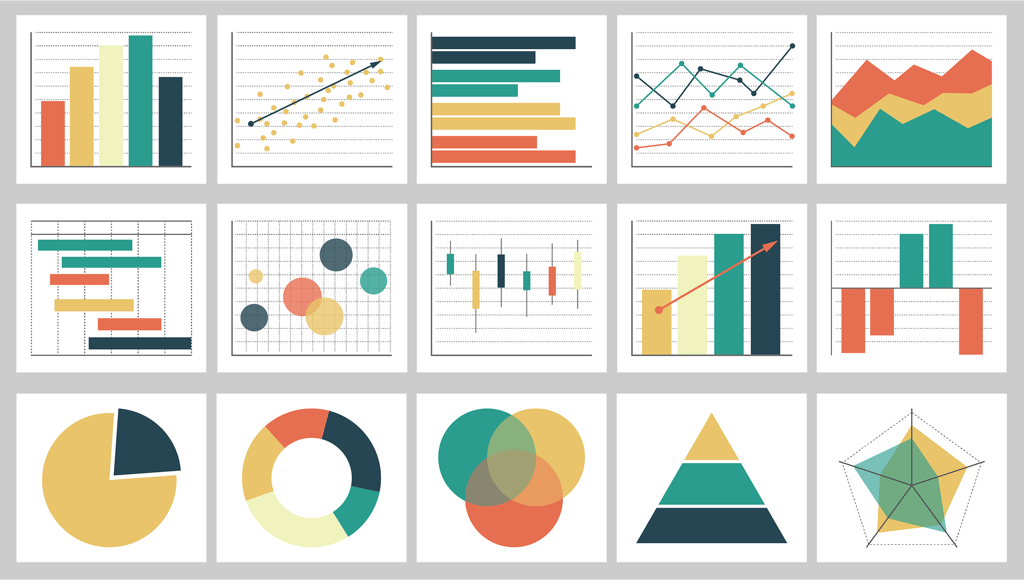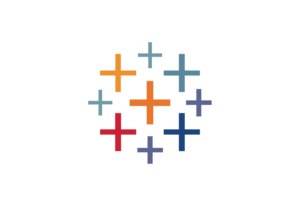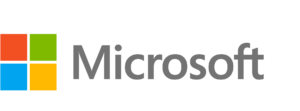

Best Data Analytics Tools & Software 2021 | ENP
Whether you’re trying to learn more about past and future performance for your line of business or you’re trying to automate a business tool or process with machine learning (ML), in-depth data knowledge and analytics fuel the engine behind these efforts. Data analysis can be performed manually by data scientists and basic office productivity suite […]


Whether you’re trying to learn more about past and future performance for your line of business or you’re trying to automate a business tool or process with machine learning (ML), in-depth data knowledge and analytics fuel the engine behind these efforts. Data analysis can be performed manually by data scientists and basic office productivity suite technologies, but specialized data analytics tools and software offer additional support, deeper insights, and automated reporting for data teams.
The data analytics software market is expected to reach $132.9 billion by 2026, growing from 2019’s projected value of $23 billion, according to Market Research Future. While much of this growth is seen in big tech companies with artificial intelligence (AI) and ML-focused objectives, industries like manufacturing, retail, and healthcare are also increasing their data analytics investments to improve customer experiences and operational efficiencies. Read on to learn how data analytics solutions can benefit your particular business and what features you should consider for optimal data results.
Read Next: Top Machine Learning Companies
Data analytics encompasses more than just data analysis, or the practice of preparing data for initial understanding. Data analytics takes data analysis and expands upon that foundation, focusing on collecting, organizing, storing, segmenting, and visualizing data in ways that make it more useful for companies that want to apply data knowledge to business practices.
Data analytics can refer to a variety of methodologies, strategies, and approaches to data, but most data analytics processes fall into one of the following four categories:
Learn more about data analytics on Datamation: Best Data Analysis Methods
Data analytical tools are the software solutions that make it possible to analyze and mine big data stores for different business metrics. In the case of AI/ML, data analytics tools can also be used to optimize training data for algorithms and models. Data scientists use data analytics tools to process a variety of queries about a data set, but because the tools help with process automation and data visualization, data scientists rely on this kind of software to perform data analysis at scale. Data analytical tools often work in combination with data warehousing and cloud computing infrastructure, making them helpful assets for big data management across enterprise environments.
Data analytics software runs the spectrum of basic to highly complex features. In order to get the most out of your data analytics software, look for solutions that include these features natively or through simple integrations:
More Data Visualization Solutions to Consider: Best Data Visualization Tools & Software

Tableau, a Salesforce entity since 2019, is considered one of the top data analytics platforms on the market for its user-friendly dashboards and data visualizations. It offers a wide variety of capabilities to users and is compatible with several other enterprise environments and tools. Most notably, Tableau Online offers flexible deployment solutions that work well in a multicloud environment.
Features:
Top Pro: Data visualization and data storytelling are customizable and user-friendly.
Top Con: Tableau is one of the more expensive tools on this market, and some customers describe their customer support as a pain point.

Sisense is considered one of the top tools for power users with previous data platform management experience due to its advanced features and capabilities with more complex data workloads. Many users select Sisense for its cloud-native infrastructure that works well with most cloud and container applications. Users also praise the speed and depth that Sisense queries can provide for cross-application analysis.
Features:
Top Pro: Sisense Labs is a strong innovator, now offering some of the best AI/ML algorithms for this market.
Top Con: While many users appreciate the ElastiCube analytics database tool, some users have expressed that errors with that tool cause platform-wide errors, such as server failures.

SAS Viya is one component of a large data management portfolio offered by SAS, providing resources from data preparation to data visualization and reporting. Many users choose SAS Viya because the platform offers a wide variety of data management features while also offering some of the most advanced AI and ML capabilities on the market. Although the SAS portfolio of data tools is too expensive for some companies, many enterprises choose this tool for its holistic approach to data management.
Features:
Top Pro: Users praise the speed and detail that the tool provides for large datasets.
Top Con: Certain visualizations, such as KPI cards, are not available when compared to other top analytics solutions.

Microsoft Power BI is a longtime favorite for enterprises that want self-service data insights and business intelligence. Microsoft’s longstanding relationships with other enterprise tech companies mean that Power BI users can easily connect with a large portfolio of global data centers and national clouds, which is particularly useful for compliance and regulatory management. Power BI is also a top data security performer, offering features like sensitivity labeling, bring your own key (BYOK), service tags, and other Microsoft Azure-based security features.
Features:
Top Pro: Power Query and other data quality features are user-friendly and resemble familiar workplace tools like Excel.
Top Con: The on-premises version of Power BI does not have the same number of advanced features as the cloud version, and the cloud version must be run in Microsoft Azure.

TIBCO Spotfire is a full-service data analytics software solution that’s known for its wide variety of data visualizations and supported mediums. While also providing more traditional data visualizations and insights, Spotfire is one of the top solutions for immersive visual analytics, streaming analytics, and geoanalytics.
Features:
Top Pro: Extensive customizations and integrations are available, especially due to their integration with Python and R bundled engines.
Top Con: Users specifically note that data visualizations look outdated and are not very UX/UI-driven.

Google Data Studio offers one of the lowest learning curves on this list, with many of its top capabilities available in the free version. Users often select this tool because of its affordability and its connectivity with other Google cloud applications. Much like other tools in the Google toolkit, Google Data Studio makes it easy for users to collaborate with both internal and external stakeholders, which further democratizes data for an enterprise.
Features:
Top Pro: Google Data Studio is one of the most collaborative tools available, making it possible for both internal and external stakeholders to share and edit reports as needed.
Top Con: Google Data Studio works better for less complicated and smaller data sets; users have commented on the bugs, slower speeds, and limited capabilities they experience when they attempt to work with big data sources.

While it’s also considered a high-performance platform on its own, MicroStrategy uses API connectors to connect with many competing platforms and share their strengths. This API connector strategy, along with their approach to embedded analytics across enterprise platforms, makes MicroStrategy a top choice for companies that currently manage their data in silos.
Features:
Top Pro: MicroStrategy offers HyperIntelligence, a feature that embeds both insights and actions in external applications used by a company.
Top Con: Several users have commented on the outdated user interface (UI) and overall design of the tool.

The SAP Analytics Cloud is one layer of SAP’s Business Technology Platform, which is the primary reason why this tool is preferred on the market for end-to-end visibility on business intelligence initiatives. This SAP tool offers augmented analytics, self-service analytics, and AI/ML-powered analytics, but it is most widely recognized for its advanced predictive analytics offerings.
Features:
Top Pro: SAP’s conversational analytics offering makes it easy for non-experts to submit and review data queries on the platform.
Top Con: Some users have expressed interest in greater external collaboration capabilities, such as those found in Google Data Studio.

While many data analytics solutions focus on future outcomes based on past data insights, Qlik Sense advertises itself as a platform for “Active Intelligence,” or real-time insights that can immediately inform business decisions. With its hybrid cloud, SaaS, and mobile capabilities, Qlik Sense is also a flexible option for different user interfaces and environments.
Features:
Top Pro: Qlik’s platform is one of the most mobile-friendly data analytics tools on the market.
Top Con: Qlik offers only very limited version control features.
Tools to Help You Protect Your Data: Best Data Loss Prevention (DLP) Software & Tools
Data analytics software is an umbrella term that offers features for a variety of price points and operational complexities. Regardless of your industry or specific use case, you’ll likely need this type of software if you find yourself in one of these scenarios:
Tips for Data Quality Management: Best Deduplication Software for Managing Data
Enterprise networks in particular work with a lot of data that can be manipulated for deeper business insights and future planning. If your organization is still on the fence about investing in data analytical software, consider some of the following benefits that organizations reap when they supplement their data management efforts:
A more catered customer experience becomes possible when you work with software that provides a deeper understanding of customer data. This knowledge can also extend to prospective customers and third-party partners.
In more traditional data analysis, you’ll likely miss a data set or connection that could be helpful for better understanding what’s happening in the business. Data analytics software offers more number-driven insights into business performance and eliminates the human error that usually comes with predictive analytics and business intelligence.
The majority of data analytics platforms integrate well with other enterprise software that you use. This means that you can easily mine data knowledge from other tools, especially if you use a data analytics solution that offers embedded analytics as a feature.
Advanced data software solutions are often considered one of the most important enterprise tools for the future, especially as more organizations become interested in developing their own AI and ML models. With specialized data analytics and management software, you can better understand your existing data and how it can be optimized to train artificial intelligence solutions in the future.
Develop the Right Infrastructure to Secure Your Data: Best Backup Software for Securing Your Data


Shelby Hiter is a writer with more than five years of experience in writing and editing, focusing on healthcare, technology, data, enterprise IT, and technology marketing. She currently writes for four different digital publications in the technology industry: Datamation, Enterprise Networking Planet, CIO Insight, and Webopedia. When she’s not writing, Shelby loves finding group trivia events with friends, cross stitching decorations for her home, reading too many novels, and turning her puppy into a social media influencer.

Enterprise Networking Planet aims to educate and assist IT administrators in building strong network infrastructures for their enterprise companies. Enterprise Networking Planet contributors write about relevant and useful topics on the cutting edge of enterprise networking based on years of personal experience in the field.
Property of TechnologyAdvice. © 2025 TechnologyAdvice. All Rights Reserved
Advertiser Disclosure: Some of the products that appear on this site are from companies from which TechnologyAdvice receives compensation. This compensation may impact how and where products appear on this site including, for example, the order in which they appear. TechnologyAdvice does not include all companies or all types of products available in the marketplace.